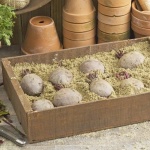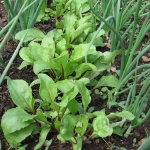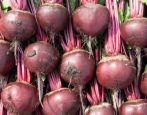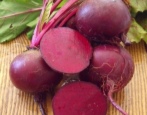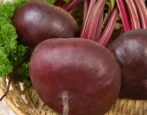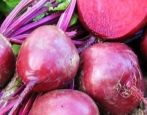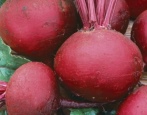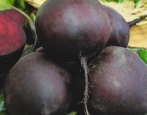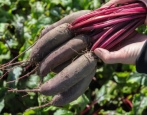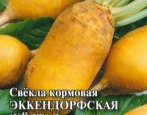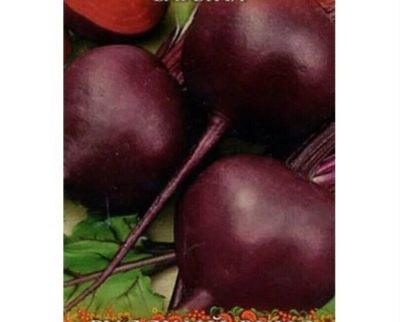
- Authors: Gavrish S.F., Morev V.V., Amcheslavskaya E.V., Volok O.A.
- Year of approval: 2013
- Leaf rosette shape: semi-upright
- Leaves: oval, green with red veins, slightly bubbly, weak edge waviness
- Petiole: bottom side red to purple
- The form: rounded
- Weight, g: 90-220
- Cork head: the average
- Pulp color : dark red
- Ringiness: without rings
Barynya's beet is a relatively young variety that has managed to gain popularity among gardeners. It attracts with high yield rates, unpretentiousness and resistance to common diseases and pests.
Description of the variety
The Barynya variety is distinguished by its quick survival rate even in harsh conditions. Among the advantages are:
- strong roots;
- durable tops;
- medium-sized leaves.
Beets are easy to harvest, which is also one of the advantages of the variety. The lady is suitable for growing in open ground.
Characteristics of the appearance of the plant and root crops
One of the peculiarities of the variety is its large roots, which half protrude from the ground when ripe. Among the characteristics:
- weight - from 90 to 220 g;
- shape - rounded;
- the skin is thin, red;
- the pulp is juicy dark red.
Beet root crops do not form rings, unlike other varieties, they have excellent transportability.
Purpose and taste of tubers
Beetroot Barynya has a pleasant and juicy taste, which was noted by the tasters. The fruits are suitable for fresh consumption, as well as for the preparation of various culinary dishes and for long-term storage. Often, beets are used for workpieces.
Maturation
On average, root crops ripen 100–120 days after the emergence of seedlings.
Yield
The yield index is 3–6 kg / m 2. From one hectare it is possible to collect from 285 to 590 centners of root crops. If desired, it can be increased by following agrotechnical recommendations.
Growing regions
The Barynya variety, bred by domestic breeders, is in demand in many regions of the country. The main one is Central. Recently, beets have been grown in the Volga-Vyatka region.
Growing and care
Beets are grown mainly by seed - this is the most common method. Before sowing, gardeners carefully prepare the soil, fertilizing and loosening it, and preparing the seeds. Seed preparation takes place in several stages.
- Selection. First of all, it is recommended to select seeds, leaving whole and large samples that are more likely to sprout.
- Disinfection. It is carried out by soaking the seeds in a weakly concentrated solution of potassium permanganate.
- Treatment. Additionally, gardeners are advised to treat seeds with growth stimulants.
Planting seed is carried out in accordance with the following scheme:
- between the rows they recede up to 30 cm;
- between seeds in a row maintain a distance of 6 cm;
- the maximum seeding depth is 2 cm.
At the end of the procedure, the seeds are sprinkled with the remaining soil, watered and covered with transparent material for 2 weeks, thus forming a greenhouse effect. Then all that remains is to take care of the culture. There are highlights.
- Watering. It is recommended to add water to the soil 1-2 times a week. At the same time, during a drought period, it is worth increasing watering, and during the rainy season, stop it for a while.For irrigation, they usually use warm and settled water.
- Top dressing. Beets do not require constant fertilization. The Lady should be fed during the period of growth and formation of fruits, using both organic and mineral compositions.
- Weeding and loosening. Mandatory procedures to start after watering. With their help, it will be possible to preserve the health of the culture and accelerate its growth.
Harvesting begins mainly towards the end of summer or early autumn, depending on the region where the beets are grown. It is recommended to store the vegetable in a cool and dark place, where there is no access to moisture, rodents or insects.

Beetroot tolerates cold snaps, therefore it is widely grown in the open field. When planting beets, you need to correctly determine the sowing time, choose a suitable place, prepare the beds, and do pre-sowing seed treatment.
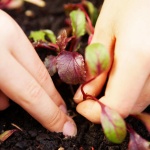
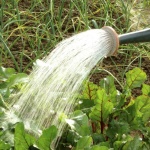
Soil requirements
It is recommended to grow the Lady in fertile and well-drained soils. Additional recommendations are worth considering.
- The groundwater level should be low. Otherwise, the roots will quickly rot without forming.
- The acidity index should be at least 6 and not more than 7 pH. If necessary, it can be corrected with appropriate fertilizers, which are applied to the ground before planting the beets.
- When choosing a site for growing crops, preference should be given to sunny and calm places.
Also, beets feel good in partial shade. The best solution would be to plant a vegetable where tomatoes, onions or potatoes previously grew.
Required climatic conditions
The optimal time for planting beets in open ground is late April or early May. During this period, the soil will already warm up to a temperature of + 8 ° C, so the risk of frost return will be minimal.
Disease and pest resistance
The Barynya variety is distinguished by strong immunity. The variety copes well with common pests and diseases, preventing spoilage of roots and providing high yields even in harsh conditions.
Gardeners, regardless of the strength of immunity, recommend preventive treatment of the culture. For this, beet seeds are soaked in a solution of potassium permanganate or calcined for 2-3 hours.

